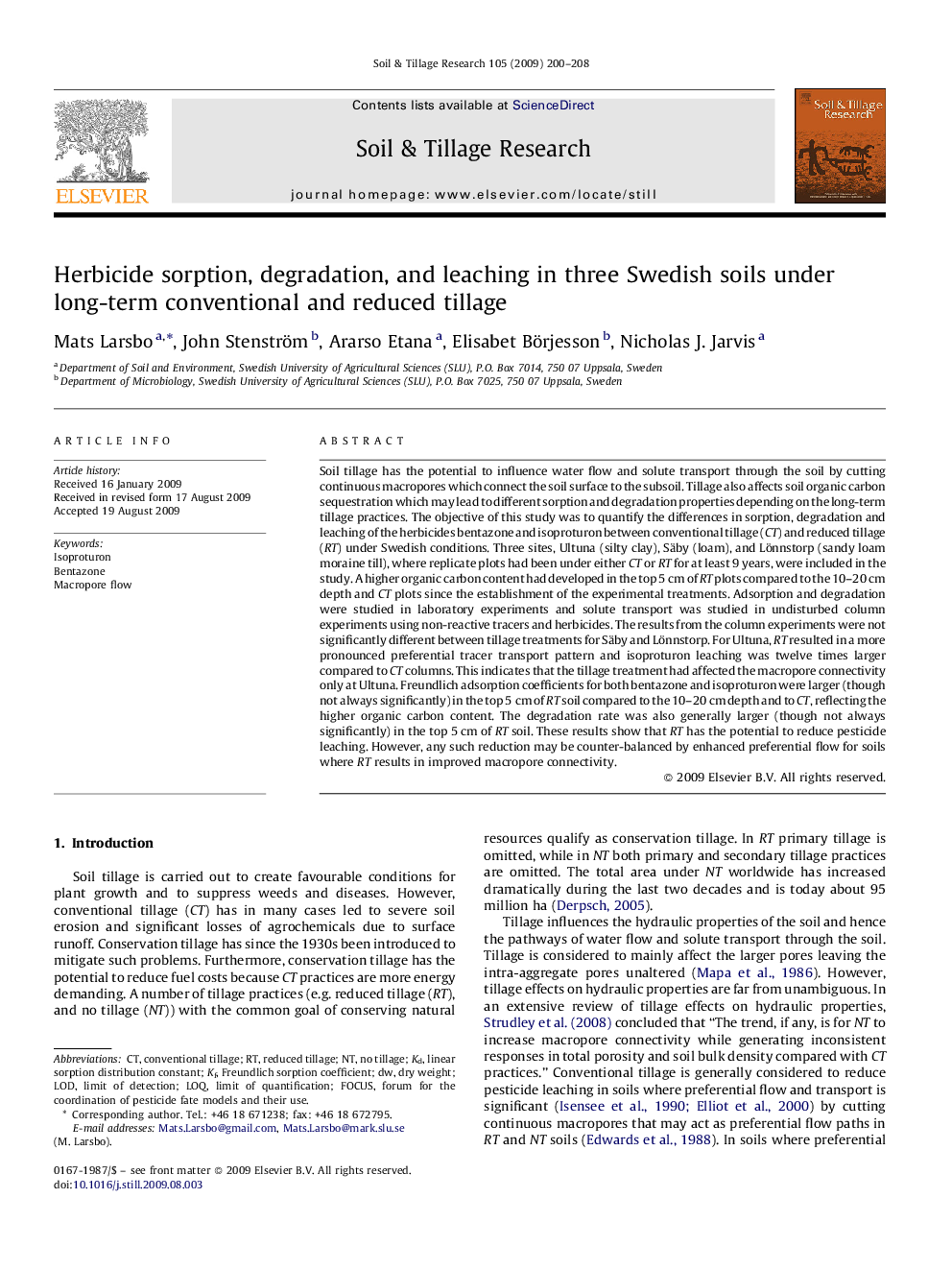| کد مقاله | کد نشریه | سال انتشار | مقاله انگلیسی | نسخه تمام متن |
|---|---|---|---|---|
| 306241 | 513086 | 2009 | 9 صفحه PDF | دانلود رایگان |

Soil tillage has the potential to influence water flow and solute transport through the soil by cutting continuous macropores which connect the soil surface to the subsoil. Tillage also affects soil organic carbon sequestration which may lead to different sorption and degradation properties depending on the long-term tillage practices. The objective of this study was to quantify the differences in sorption, degradation and leaching of the herbicides bentazone and isoproturon between conventional tillage (CT) and reduced tillage (RT) under Swedish conditions. Three sites, Ultuna (silty clay), Säby (loam), and Lönnstorp (sandy loam moraine till), where replicate plots had been under either CT or RT for at least 9 years, were included in the study. A higher organic carbon content had developed in the top 5 cm of RT plots compared to the 10–20 cm depth and CT plots since the establishment of the experimental treatments. Adsorption and degradation were studied in laboratory experiments and solute transport was studied in undisturbed column experiments using non-reactive tracers and herbicides. The results from the column experiments were not significantly different between tillage treatments for Säby and Lönnstorp. For Ultuna, RT resulted in a more pronounced preferential tracer transport pattern and isoproturon leaching was twelve times larger compared to CT columns. This indicates that the tillage treatment had affected the macropore connectivity only at Ultuna. Freundlich adsorption coefficients for both bentazone and isoproturon were larger (though not always significantly) in the top 5 cm of RT soil compared to the 10–20 cm depth and to CT, reflecting the higher organic carbon content. The degradation rate was also generally larger (though not always significantly) in the top 5 cm of RT soil. These results show that RT has the potential to reduce pesticide leaching. However, any such reduction may be counter-balanced by enhanced preferential flow for soils where RT results in improved macropore connectivity.
Journal: Soil and Tillage Research - Volume 105, Issue 2, November 2009, Pages 200–208